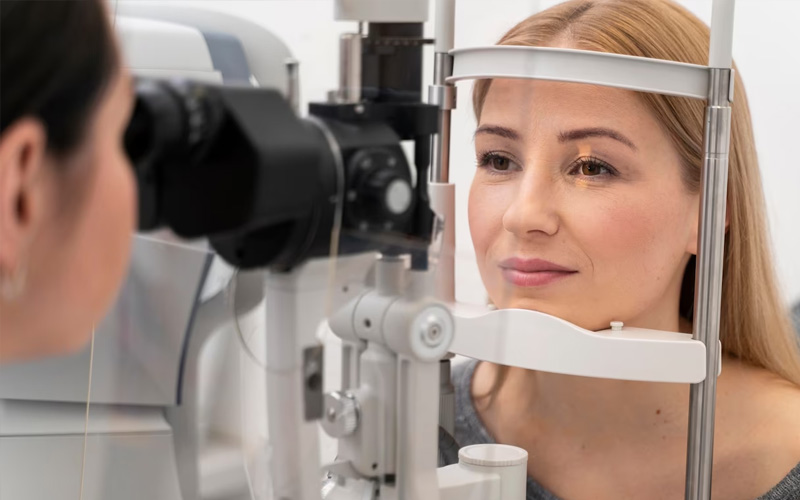Impairment of the eyelid (What Ptosis?)
Decrease Latin which means “ptosis” is used to describe impairment of the upper eyelids in ophthalmology. They fulfill the function of opening and closing of the upper eyelids moving textures.
However, alertness, flat-faced-a-glance (primary position) of the top cover at a certain height to be anatomically to the field of visual function and vision is essential. This height also the transparent area in the front of the cornea of the eye) layer sclera (white part) where it meets the limit is approximately 1-2 mm is a cover. However, with advancing age of the upper eyelid, and congenital or lose the level can go down to a lower position. This situation ptosis (ptosis) is called. In such a case, an image consists of asymmetric and only aesthetically unpleasant, but it also narrows the field of vision and vision worsens. This situation usually by removing the person on the same side as the muscle is involuntary, or by lifting the jaw and tries to find the solution.
I.e. impairment of the upper eyelid ptosis can occur for many different reasons. Weakness of the muscle that lifts your eyelids with advancing age is statistically the most common reason for leaving or displaced. Aponorotik called ptosis, in this case, the effect of genetic predisposition time and the work of the muscles below the level they should be in place is broken and they can change the eyelids.
These muscles also function may not see it or weak from birth. In such cases the doctor's early eye examination is very important. Impairment eyelid (ptosis) the amount of light entering the eye on the cover if the cover if it is blocked by the risk of amblyopia in that eye arises. So even surgery at an early age the level of cover should be set, and ptosis (ptosis) because of the development of vision loss should be prevented. Team up together with them in neurological disorders, Nov musculoskeletal system-related disorders, tumor, trauma, decrease factors such as the eyelids (ptosis) may be the cause. The assessment of the underlying cause ptosis and an experienced ophthalmologist in choosing the appropriate treatment is very important.
The team treating neurological disorders is usually surgery. A surgery that can be performed under local or general anesthesia, with the goal to protect and cover the appropriate point east and the level of vision both aesthetically beautiful and more symmetrical appearance.
Ptosis (eyelid, the amount of treatment option is surgery. The operation under local anesthesia, sedation or under general anesthesia can be planned. Ptosis (ptosis), the type of underlying pathology, the patient's eye lid crease of the eyelid can be done from the inside or according to age. The muscle that lifts the eyelid they are weak and are not able to function in the event of the muscles on the forehead can also be used. And why the method to be applied, regardless of the lower lid to a certain level, the main purpose is to prevent raising of seeing to be physically blocked. Cover and appearance of the symmetric aesthetic concerns, especially in infants and children are of secondary importance. After the operation, patients are usually discharged the same day, and you don't have to close their eyes. Can return to normal life after a period relatively quick recovery.
Despite all this, though it may be treated as a process comfortable and fast for all patients ptosis (eyelid impairment), or oculoplastic surgery, facial plastic surgeries is one of the most delicate of. The highly sensitive tissue of the eyelid and the environment, the nature of the motion of the tissue, promote and protect the health of the eyes of surgery and the underlying obligation to millimetric plans are some of the factors that cause it.
Therefore, its implementation plan and diagnosis with a physician knowledgeable and experienced about the topic in advance for success would be the most logical option.









